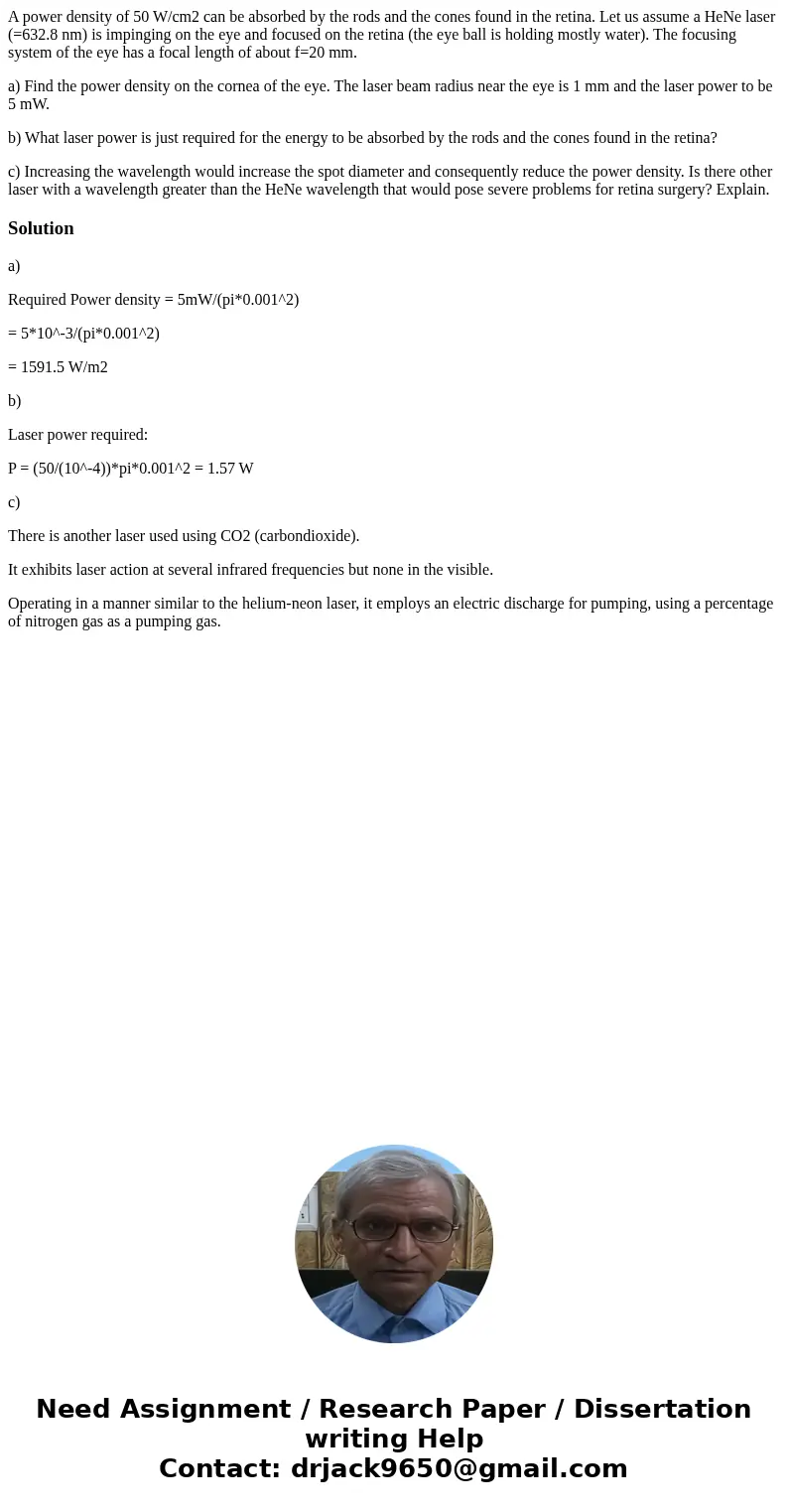A power density of 50 Wcm2 can be absorbed by the rods and t
A power density of 50 W/cm2 can be absorbed by the rods and the cones found in the retina. Let us assume a HeNe laser (=632.8 nm) is impinging on the eye and focused on the retina (the eye ball is holding mostly water). The focusing system of the eye has a focal length of about f=20 mm.
a) Find the power density on the cornea of the eye. The laser beam radius near the eye is 1 mm and the laser power to be 5 mW.
b) What laser power is just required for the energy to be absorbed by the rods and the cones found in the retina?
c) Increasing the wavelength would increase the spot diameter and consequently reduce the power density. Is there other laser with a wavelength greater than the HeNe wavelength that would pose severe problems for retina surgery? Explain.
Solution
a)
Required Power density = 5mW/(pi*0.001^2)
= 5*10^-3/(pi*0.001^2)
= 1591.5 W/m2
b)
Laser power required:
P = (50/(10^-4))*pi*0.001^2 = 1.57 W
c)
There is another laser used using CO2 (carbondioxide).
It exhibits laser action at several infrared frequencies but none in the visible.
Operating in a manner similar to the helium-neon laser, it employs an electric discharge for pumping, using a percentage of nitrogen gas as a pumping gas.

 Homework Sourse
Homework Sourse